
Transit Briefs: Brightline, City of Edmonton, Houston Metro, MassDOT, NYMTA
Written by Marybeth Luczak, Executive Editor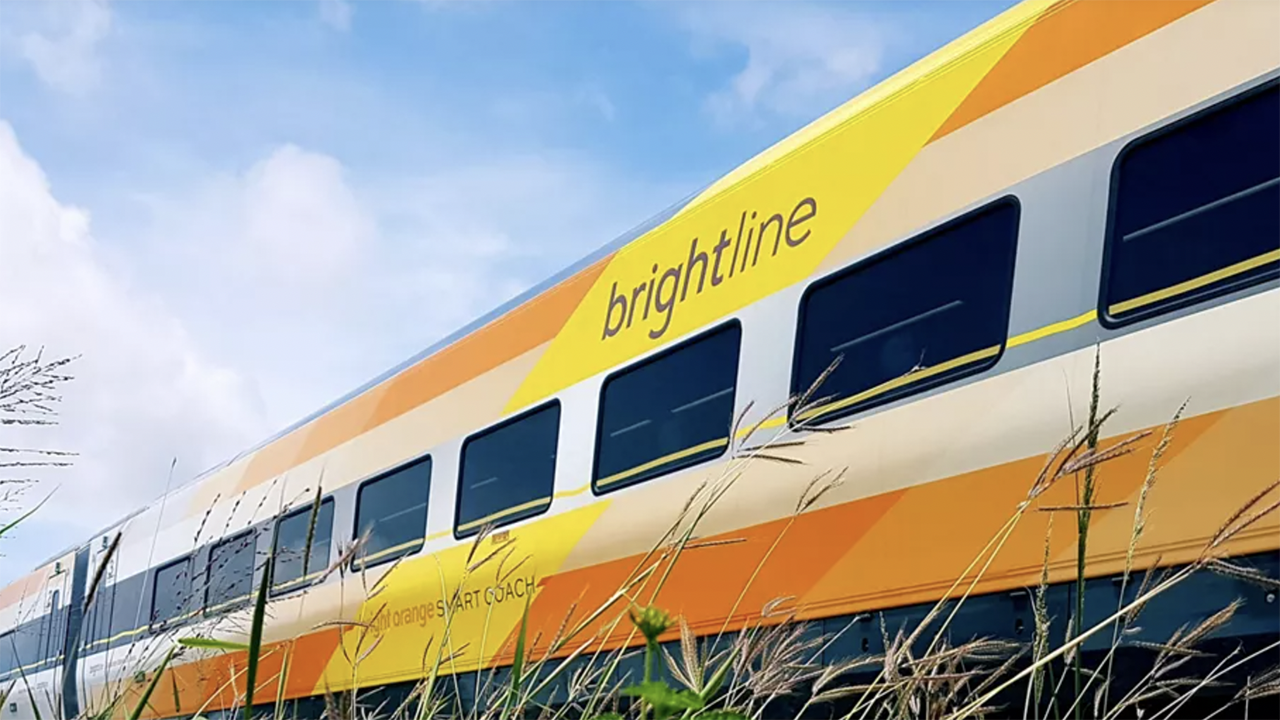
Brightline, Florida’s private-sector passenger railroad, is planning a new station in the Treasure Coast region. On Oct. 26, it released an RFP to determine the location. (Brightline Photograph)
Brightline launches a Request for Proposals (RFP) for a new intercity passenger rail station in Florida’s Treasure Coast region. Also, the long-awaited Valley Line Southeast LRT will open next month in Edmonton, Alberta; Metropolitan Transit Authority of Harris County (Houston Metro) selects Jacobs as a transit-oriented development advisor; Massachusetts Department of Transportation (MassDOT) applies for U.S. Department of Transportation (USDOT) SMART grants for rail safety projects; and Fitch upgrades New York Metropolitan Transportation Authority’s (MTA) credit rating and rating outlook.
Brightline
Brightline, Florida’s private-sector passenger railroad, is planning a new station in the Treasure Coast region, found on the state’s Atlantic coast. On Oct. 26, it issued an RFP seeking proposals to identify a station location (see above). Proposals may come from private or public landowners that control property along the Brightline/Florida East Coast Railway corridor in St. Lucie or Martin counties and meet the qualifications, the railroad said.
Brightline currently operates six stations, including the newest one in Orlando, which opened Sept. 22. The railroad launched the first phase of its South Florida operations in 2018, connecting Miami, Fort Lauderdale and West Palm Beach. Stations in Boca Raton and Aventura opened in 2022. Construction of its 170-mile, $6 billion phase two extension from West Palm Beach to Orlando began in 2019.
According to the RFP, Brightline anticipates short listing several Treasure Coast station proposals and advancing discussions/negotiations with each proposer, with the goal of entering into contract with one proposer in early 2024. The railroad expects the station to open in first-quarter 2028.
Brightline will hold a proposal meeting in St. Lucie County on Nov. 28, and in Martin County on Nov. 29; neither meeting is open to the public. Proposal submissions are due Dec. 22, 2023.
“We’re excited to begin the process of identifying a station location in the Treasure Coast and have seen tremendous support from the local community,” Brightline CEO Michael Reininger said. “Expanding Brightline into the Treasure Coast region will make Brightline one of the most accessible forms of transportation in Florida, giving access to nearly half of the state’s residents.”
In other news, Brightline recently released passenger rail ridership data that includes its new extension to Orlando.
Edmonton’s Valley Line Southeast LRT
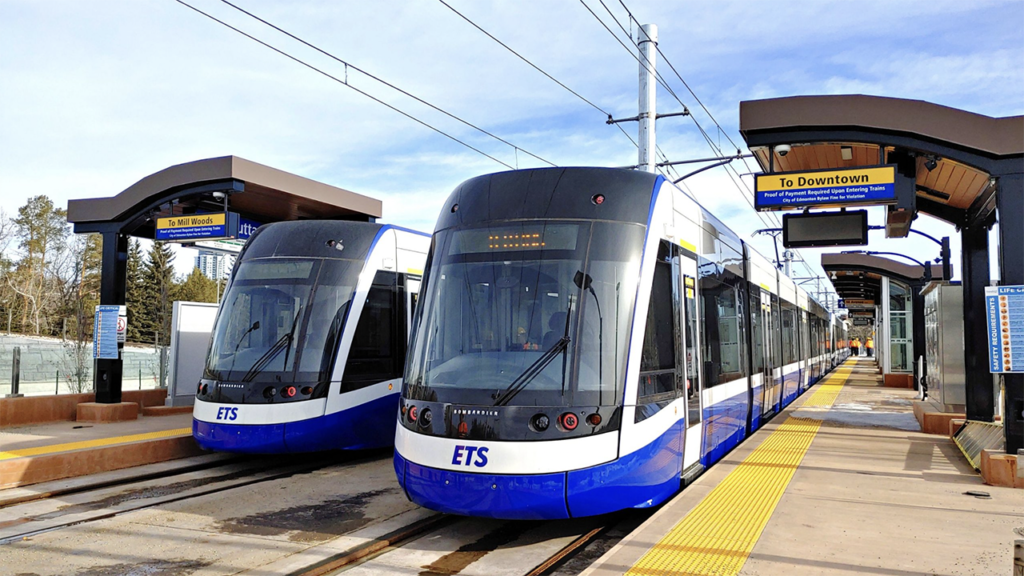
The city of Edmonton on Oct. 24 announced that the long-awaited 8.1-mile Valley Line Southeast LRT will open Nov. 4. Service will begin at 5:15 a.m. at the Mill Woods stop and 102 Street stop downtown. It will include 11 street-level stops, an elevated station with a 1,300-spot Park and Ride facility and a full transit center located in the Wagner industrial area, a new Tawatinâ Bridge across North Saskatchewan River, a short tunnel from the north face of the River Valley through to the Quarters redevelopment, and an interchange at Churchill Square to access the existing Metro and Capital LRT lines. Twenty-six Alstom Flexity LRVs will carry riders.
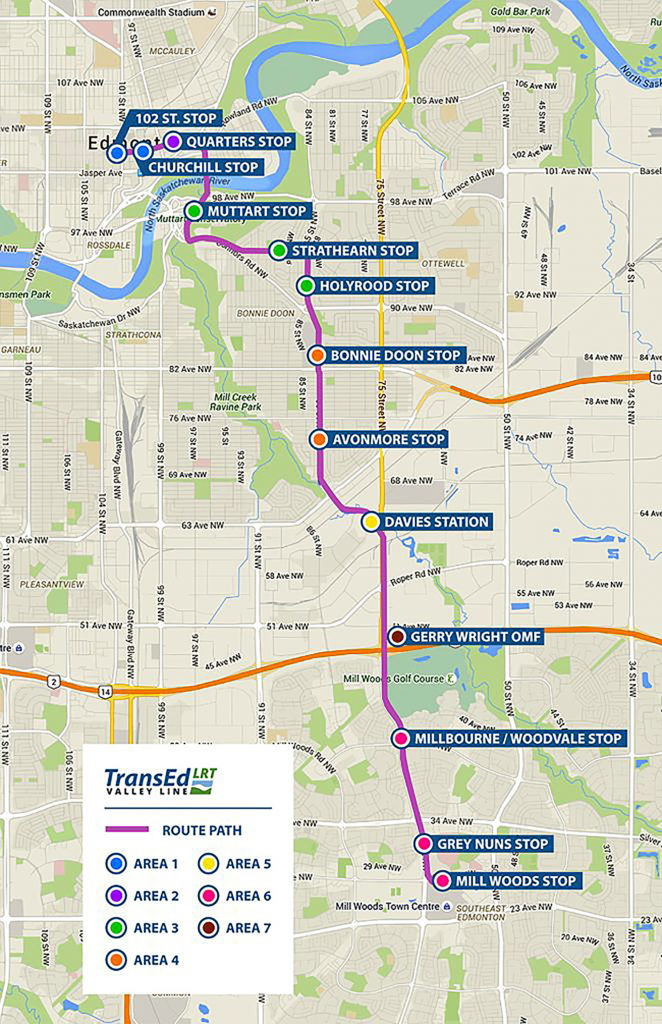
The C$1.8 billion project’s overall contractor is TransEd Partners, which will also operate and maintain the completed LRT line under a 30-year P3 (public-private partnership) arrangement with the city. TransEd Partners comprises Bechtel, EllisDon, Alstom, and Fengate Capital Management Ltd., with Arup Canada and IBI Group.
The city reported that Valley Line Southeast “has been independently certified by professional engineers, a safety auditor and an independent, professionally qualified, certifier,” and TransEd recently received “a formal certificate from the independent certifier, indicating the infrastructure is complete and meets the requirements of the project agreement.”
Work began on the LRT project, Edmonton’s first using low-floor vehicle technology, on April 22, 2016. “The DBOM (design-build-operate-maintain) project has faced several delays,” according to a report published earlier this year by Railway Age Canadian Contributing Editor John Thompson. “Early in the construction program, a large block of concrete was discovered in the North Saskatchewan River, potentially interfering with the building of the new LRT bridge. Removal of the offending concrete was a lengthy and complicated process. Then, the COVID virus struck, resulting in employee absenteeism, physical distancing at work sites, and materials shortages and delays.
“After several previous missed opening dates, it had been planned to open the Valley Line during the second half of 2022. However, a project inspection by city of Edmonton engineers discovered cracks in 30 of the 45 bridge piers. Consequently, LRV testing on these sections of the line had to be suspended … The reinforcing work, whose cost is being borne entirely by TransEd, was substantially complete by January [2023].”
Leading up to the opening of the line, TransEd will be conducting final operational exercises along the alignment to ensure operators and Control Center staff are prepared, the city reported Oct. 24. Over the coming weeks, TransEd will also be completing final work like curbs, landscaping and maintenance, which the city said does not affect the safe operation of the system.
A formal grand opening ceremony will be held in 2024, according to the city.
“I know many Edmontonians have been looking forward to opening day for the better part of two decades,” Mayor Amarjeet Sohi said. “Valley Line Southeast will offer an affordable and climate-friendly choice to move around our city for decades to come. I’m looking forward to riding the new line and seeing this project cross the finish line.”
“Valley Line is the first completely new transit line to open in western Canada in a generation and will transform the way we move and experience our city,” City Manager Andre Corbould said. “While the project delays have been challenging for everyone, all parties have kept their focus on one thing—providing a safe, reliable service for Edmontonians.”
“This has been a long journey, with challenges and detours, but we’re confident in the system we’ve built,” TransEd Partners CEO Ronald Joncas said. “Our focus has always been, and will continue to be, delivering a safe, reliable system to Edmontonians. We’re excited to welcome passengers onboard these brand new trains.”
Houston Metro
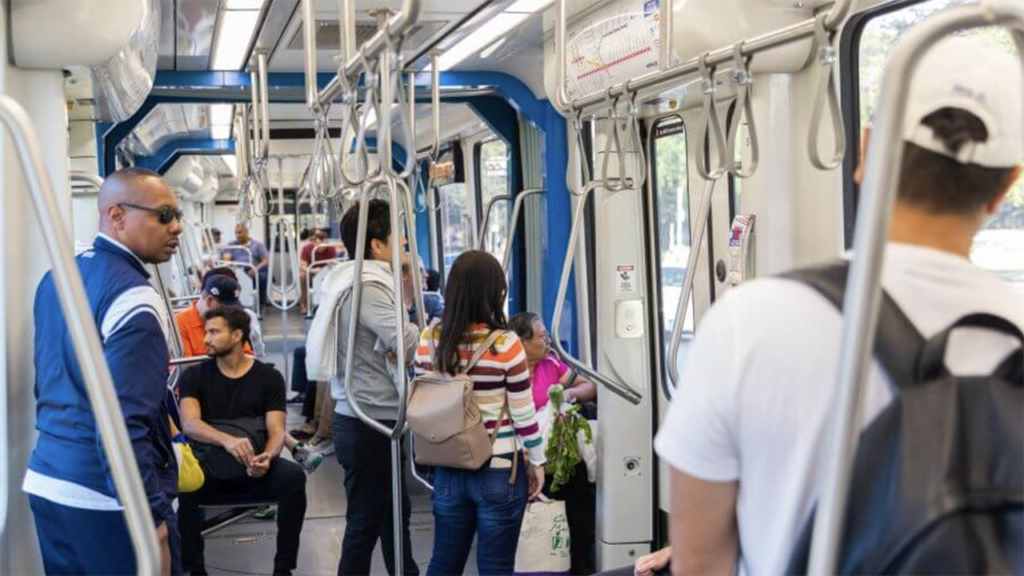
Jacobs will serve as Owner’s Advisor for Houston Metro’s Joint Development and Transit Oriented Development (TOD) program to leverage “regional transit properties with private investment to increase ridership, enhance the transit experience, and improve connectivity for Houston’s 2.3 million residents.” Jacobs said it will provide consulting for planning and real estate management services.
In support of TOD programs for Metro, which offers light rail, bus, paratransit and on-demand services, and other Houston-area clients, Jacobs said it teams with local firms including The Goodman Corporation, Jones Lang LaSalle, Outreach Strategists, Isani and Winstead for real estate, development expertise, and stakeholder engagement.
“Through our strong relationship with Metro, Jacobs will develop a program framework to create social value, ridership and revenue benefits for Metro and Houston,” Jacobs Senior Vice President and General Manager Katus Watson said. “Our deep bench of industry experience will drive this program’s success benefiting more than 200,000 people who use Metro’s services daily.”
MassDOT
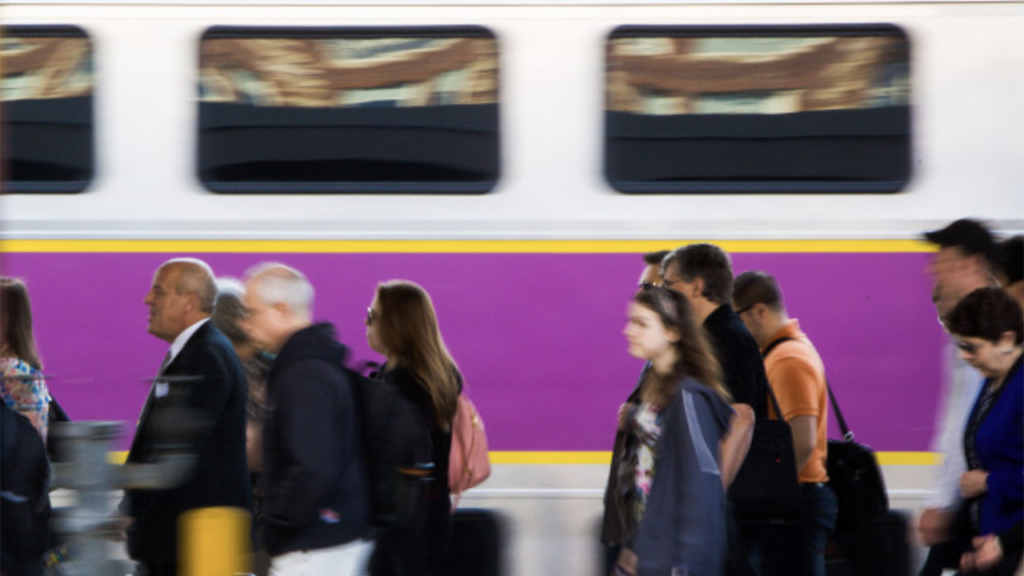
MassDOT is applying for two rail-related project grants through USDOT’s FY23 Strengthening Mobility and Revolutionizing Transportation (SMART) program. The program is open to eligible public-sector agencies to conduct demonstration projects focused on advanced smart community technologies and systems that improve transportation efficiency and safety.
The Rail and Transit Division submitted a $1.32 million proposal to monitor trespassing on railroad corridors, “using artificial intelligence and edge computing while also actively warning trespassers using advanced sensors and dynamic signs,” according to MassDOT, which said the use of this technology will “combat current issues such as a high false alarm rate, high data communication demand, and the lack of a dynamic warning system.”
“We’re always striving to innovate wherever possible, especially when it comes to safety and security,” said Rail and Transit Administrator Meredith Slesinger, who earned an Honorable Mention in Railway Age’s 2022 Women in Rail awards program. “This grant would assist us in continuing our proactive work to improve safety on rail corridors with the use of new technologies.”
The Aeronautics Division submitted a nearly $2 million proposal to use drones to monitor vegetation and weather-related hazards along MBTA Commuter Rail lines. According to MassDOT, the project would “develop and test a system for flying drones to collect aerial data to monitor, analyze, and forecast vegetation encroachment and weather-related hazards impacting the Lowell and Haverhill Commuter line, improving safety while increasing rail track management efficiency and rail service reliability.”
NYMTA
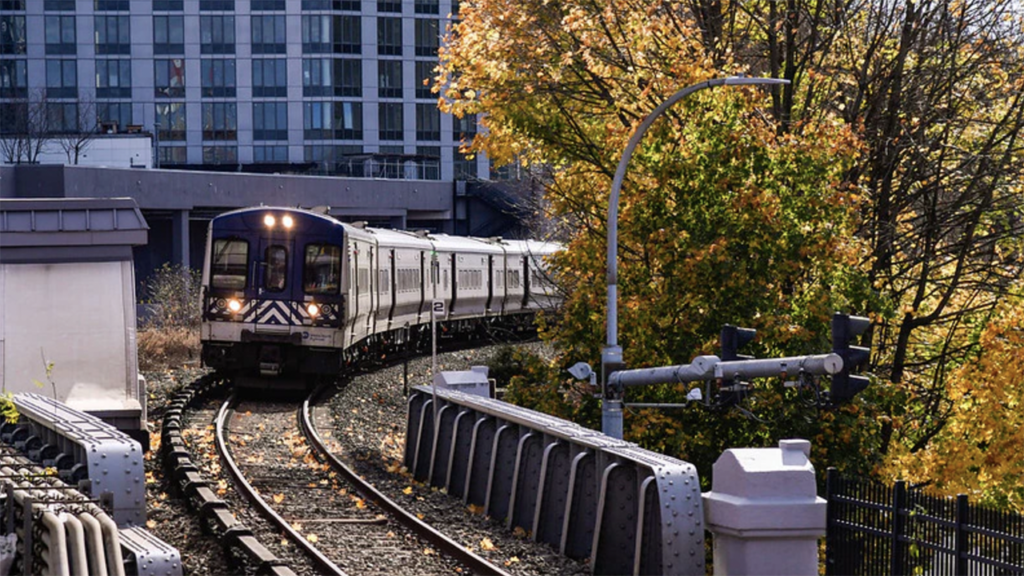
An upgraded rating from Fitch has improved MTA’s Transportation Revenue Bonds rating from “A-” to “A” and its rating outlook from “negative” to “stable,” the transit agency reported Oct. 25. “Fitch made the update based on a significant increase in state tax support garnered by Governor [Kathy] Hochul in the latest State Budget providing secured recurring revenue sources for the MTA’s operating budget,” MTA said. “The additional tax revenues in combination with stronger ridership trends and toll and fare increases led the MTA to forecast five years of consecutive balanced budgets for the first time in its recent history. This announcement follows news that Moody’s Investors Service improved the credit outlook and S&P’s Global Ratings upgraded the rating and outlook for the MTA Transportation Revenue Bonds.”
In July, MTA released its five-year financial plan that projects a balanced budget through 2027. According to MTA, an increase to the Payroll Mobility Tax, increase of city funding for paratransit, and other dedicated taxes in the FY 2024 New York State Budget have “strengthened” its financial profile, along with a “modest” fare and toll increase.
At the same time, MTA said, its post-COVID ridership recovery continues to track along the mid-point of a range predicted by McKinsey in July 2022.
The credit rating outlook of MTA’s Transportation Revenue Bonds, backed by a diverse basket of revenues including fares and tolls paid by MTA customers and state revenue streams, “reflects the performance of the operating budget and is a barometer of the MTA’s overall financial health,” MTA noted.
According to MTA, prior to the pandemic Fitch rated the Transportation Revenue Bonds at an AA- with a stable outlook. During the pandemic, Fitch took several downward actions on the rating, until it reached a rating of A- with negative outlook in October 2020, where it remained until this recent action.
“We continue to execute on our historic five-year financial plan, which demonstrates five consecutive years of balanced budgets,” MTA Chief Financial Officer Kevin said. “Fitch’s improved rating and outlook is another sign of confidence in the MTA’s ability to deliver.”



